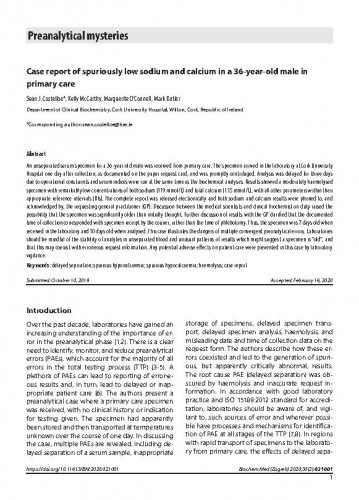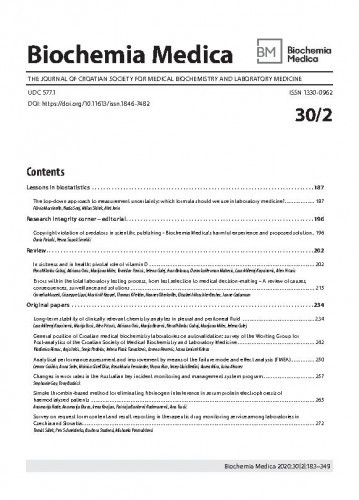An unseparated serum specimen for a 36-year-old male was received from primary care. The specimen arrived in the laboratory at Cork University Hospital one day after collection, as documented on the paper request card, and was promptly centrifuged. Analysis was delayed for three days due to operational constraints and serum indices were run at the same time as the biochemical analyses. Results showed a moderately haemolysed specimen with remarkably low concentrations of both sodium (119 mmol/L) and total calcium (1.15 mmol/L), with all other parameters within their appropriate reference intervals (RIs). The complete report was released electronically and both sodium and calcium results were phoned to, and acknowledged by, the requesting general practitioner (GP). Discussion between the medical scientists and clinical biochemist on duty raised the possibility that the specimen was significantly older than initially thought. Further discussion of results with the GP clarified that the documented time of collection corresponded with specimen receipt by the courier, rather than the time of phlebotomy. Thus, the specimen was 7 days old when received in the laboratory and 10 days old when analysed. This case illustrates the dangers of multiple convergent preanalytical errors. Laboratories should be mindful of the stability of analytes in unseparated blood and unusual patterns of results which might suggest a specimen is “old”, and that this may coexist with erroneous request information. Any potential adverse effects on patient care were prevented in this case by laboratory vigilance.
Sažetak

 Biochemia medica : the journal of Croatian Society for Medical Biochemistry and Laboratory Medicine : 30,2(2020) / glavna i odgovorna urednica Daria Pašalić.
Biochemia medica : the journal of Croatian Society for Medical Biochemistry and Laboratory Medicine : 30,2(2020) / glavna i odgovorna urednica Daria Pašalić.